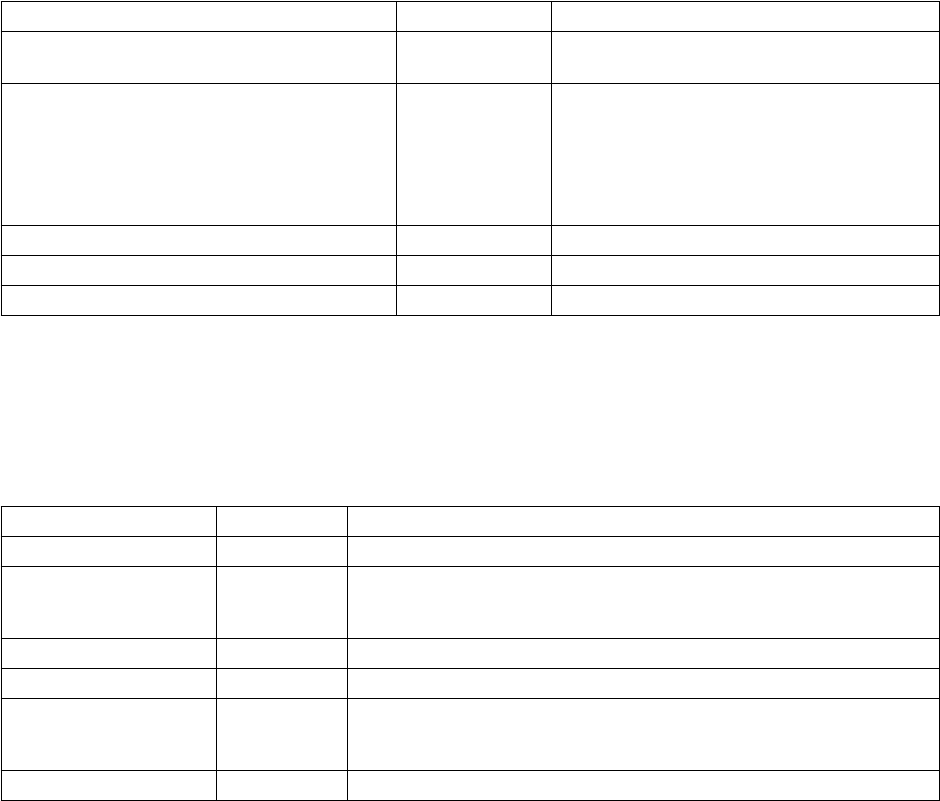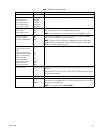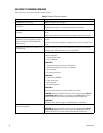
C1528M-F (6/05) 91
ASCII OPERATING COMMANDS
ASCII protocol uses the ASCII character set to transmit and receive commands between an ASCII device (such as a personal computer or ASCII
keyboard) and the CM6800E.
The ASCII protocol communicates in a standard asynchronous, byte-oriented protocol that includes: 1 start bit, 8 data bits, 1 parity bit (odd
parity), and 1 stop bit. The default communication rate is 9600 baud.
A lowercase “a” ends each command. The ASCII translator acknowledges accepted commands and rejected commands with the following
responses:
AKa command accepted
NAa command rejected or the ASCII translator does not recognize the command
If the command requires a numeric value, enter the number first.
Table I provides examples of ASCII commands. Table J lists all of the commands.
Number ranges are enclosed in brackets – do not enter the brackets. When you control a fixed speed pan and tilt, omit the speed information.
NOTE: In a 96 x 16 system the numbers for cameras, monitors, alarms, and relays can be doubled.
Table I. Examples of ASCII Commands
Functional Procedure Commands Result
Select a pan and tilt device labeled “CAMERA # 16” and
switch it to monitor # 3.
3Ma16#a Switch camera 16 to currently selected monitor 3.
Manipulate the pan and tilt device. 1Ma3#a
5Ma2#a3\a
47Ra33Da
sa
Switch camera 3 to monitor 1.
Go to camera 2, preset 3, on monitor 5.
Pan right at speed 47, tilt down at speed 33.
Stop all image motion.
Switch a camera. 1Ma3#a Switch camera 3 to monitor 1.
Call a preset. 5Ma2#a3\a Go to camera 2, preset 3, on monitor 5.
Pan and tilt. 47Ra33Da Pan right at speed 47, tilt down at speed 33.
Table J. ASCII Commands
Desired Action Command Result
Select monitor [1-9999]Ma Calls a monitor to use for camera operation.
Select camera
Next camera
Previous camera
[1-9999]#a
+a
-a
Selects a camera to display on the current operating monitor. The NEXT key (+) and PREV
key (-) commands switch to the next numbered camera in the system.
Start a sequence forward [1-99]qa Starts the selected sequence going forward (incrementing camera numbers).
Start a sequence backward [1-99]ba Starts the selected sequence going backward (decrementing camera numbers).
Hold a sequence ea Places the running sequence on hold, freezing the currently selected camera on the
monitor. It lets you control the camera or switch. The sequence is still “armed” on the
monitor, but inactive.
Hold a macro [1-64]ea Places the running macro on hold.
(Continued on next page)


















